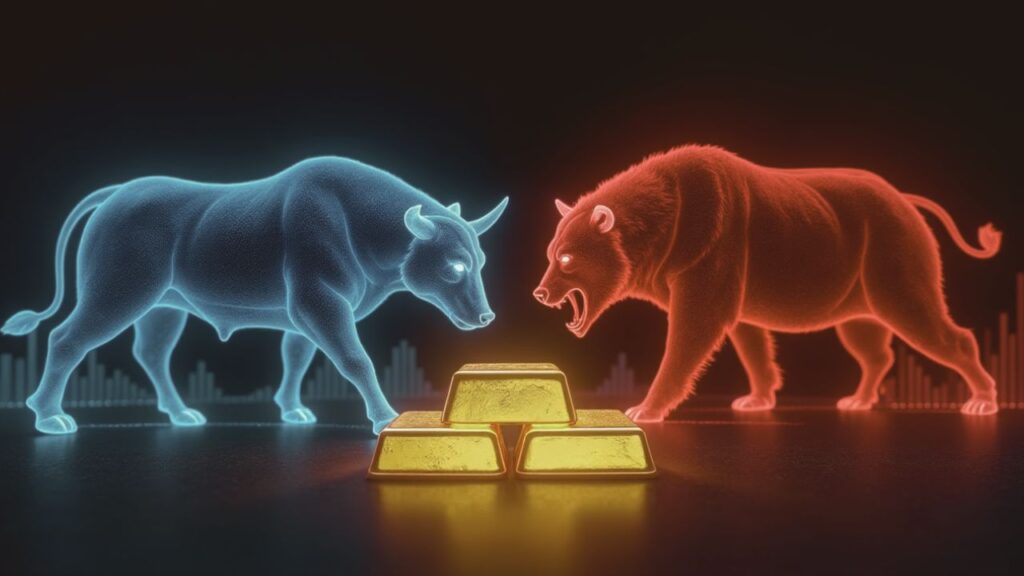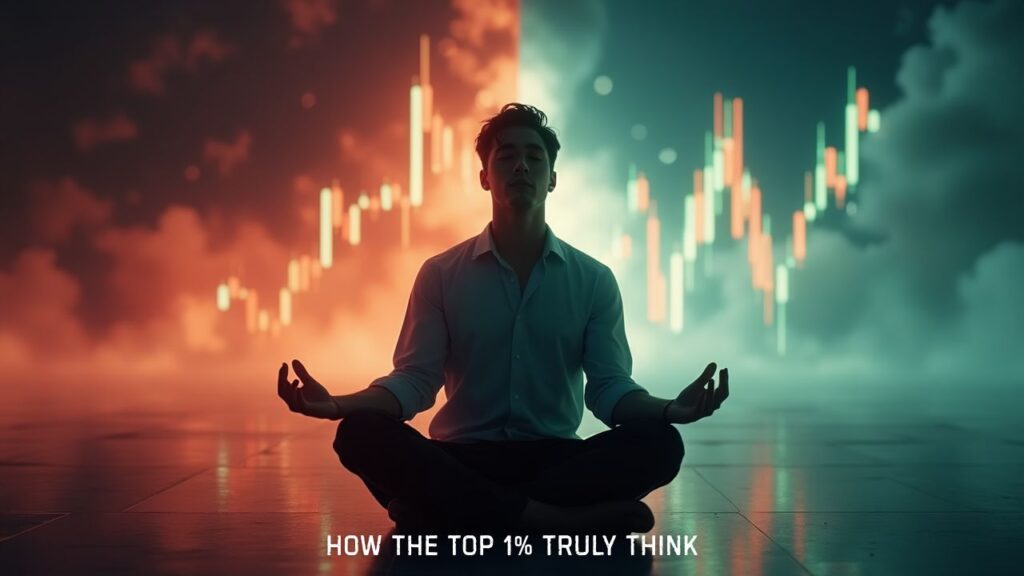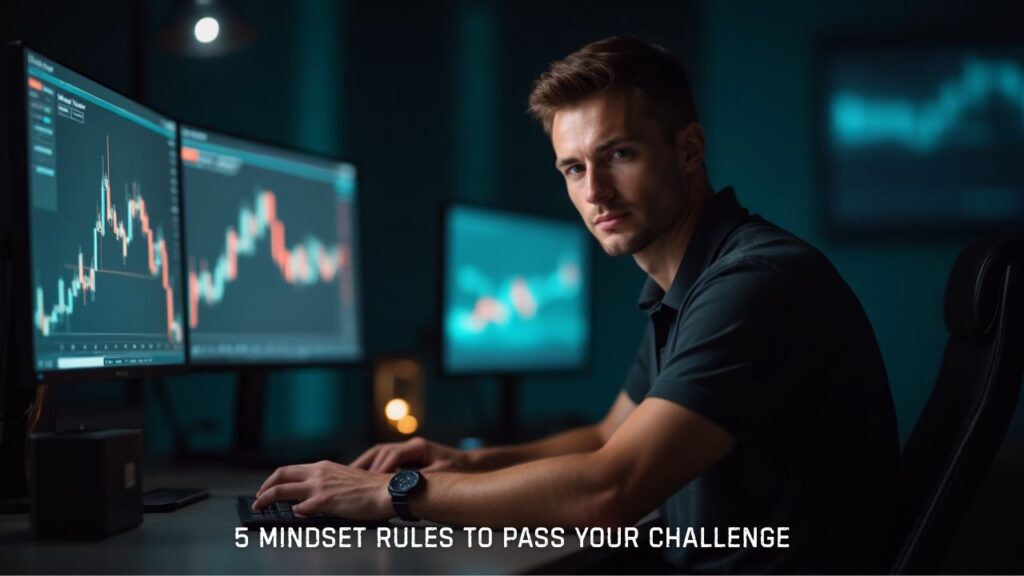Fear and greed drive markets more than charts or indicators ever will. This article breaks down the real psychological traps behind every trade, how emotions like fear, greed, and cognitive biases distort judgment and shows how mastering them builds lasting discipline and profitability.
Introduction: Why Your Mindset Is Your Greatest Trading Asset
Everyone wants to know the secret to successful trading.
Is it the strategy? The indicators? The broker? The algorithm that never fails?
No.
The greatest asset a trader owns isn’t a secret strategy or insider tip, it’s their mindset.
What separates those who make millions from those who blow up accounts isn’t just knowledge, it’s psychology.
In trading, decisions are made under pressure, uncertainty, and emotional volatility. That’s why mastering the mind becomes the most profitable edge.
As Morgan Housel says, success isn’t about intelligence, it’s about behaviour.
Let’s break down the psychology of trading and explore how fear, greed, and cognitive biases silently dictate performance and how mastering them can turn a decent trader into an elite one.
Fear and Greed: The Twin Emotions That Move Markets
Most traders think markets move because of news, data, or algorithms. And while those matter, there’s a deeper truth:
Markets move because people do and people are emotional.
Zoom into any price chart, past the candles and patterns, and you’ll find two timeless forces behind every move: fear and greed. These emotions don’t just impact decisions, they define them.
Research by the National Bureau of Economic Research (NBER) shows that strong emotional reactions to gains and losses directly harm trading performance.
As Investopedia explains, “fear and greed are the primary motivators of investor behavior.”
The Fear-Greed Cycle in Market Psychology
Fear and greed operate like a pendulum. When greed dominates, prices rise as everyone rushes to get in. Then fear creeps in, the fear of losing gains or being the last one holding the bag and prices fall.
Here’s how the cycle plays out in real-time:
| Phase | Emotion | Common Behavior |
|---|---|---|
| Optimism | Confidence builds | You believe the market will rise |
| Excitement | Early profits | You increase risk |
| Euphoria | Overconfidence | Risk feels like a myth |
| Anxiety | Market dips | Hesitation creeps in |
| Denial | Avoiding losses | “It’ll come back” |
| Fear | Realization | You freeze or panic |
| Panic | Emotional exit | You sell at the worst time |
| Despair | Emotional low | “I’ll never trade again” |
| Caution | Overprotective | You miss the rebound |
| Hope | Cycle restarts | You re-enter too early |
This pattern has repeated across history, from the dot-com bubble to crypto crashes. The rhythm doesn’t change; only the players do.
How Greed Can Sabotage a Winning Streak
Greed is sneaky. It shows up during success and whispers, “You can’t lose.”
You win a few trades, feel invincible, and start breaking your own rules trading bigger, ignoring stops, and overstaying positions. That’s when confidence turns into self-destruction.
Practical takeaway:
Build systems that stop you from yourself. Set profit targets and exit rules before you enter the trade and follow them. When you’re on a hot streak, discipline becomes your parachute.
Related read: Why Funded Traders Think Differently
How Fear Leads to Missed Opportunities
If greed makes you overtrade, fear makes you freeze. You see the perfect setup, but your hand won’t click. You wait. You hesitate. The market moves without you and regret hits harder than any loss.
Fear isn’t just losing money, it’s the fear of being wrong, of failure, or of public judgment.
Practical takeaway:
Confidence comes through repetition. Start small, stay consistent, and follow your process. Fear fades as experience builds trust in your plan.
Also read: How to Stay Calm During Drawdowns
Cognitive Biases That Destroy Trading Performance
The markets don’t just test your strategy, they test your brain. Our minds evolved for survival, not for trading. The instincts that kept our ancestors alive and that is reactivity, pattern-seeking, quick decision-making, can wreck a trading account.
Below are five common cognitive biases that quietly sabotage traders and how to beat them.
Confirmation Bias and Trading Narratives
Definition: Seeking information that confirms your existing beliefs while ignoring what doesn’t.
In trading, it sounds like:
- “This stock has to go up, everyone’s bullish.”
- “The economy’s fine, the rally will continue.”
- “My favorite YouTuber’s long, must be the right call.”
When you’re biased, you don’t analyze, you rationalize.
Practical takeaway:
Force yourself to argue the opposite side. Before every trade, ask: “If I had to short this, what would my reasoning be?”
This single question can break your bias loop and bring back objectivity.
Anchoring Bias in Market Analysis
Definition: Relying too heavily on the first piece of information, like your entry price.
Example: You bought Bitcoin at $60,000. It drops to $40,000, but you keep waiting for it to “return.” You’re anchored, not analyzing.
Practical takeaway:
Treat every position as a fresh decision. Ask, “If I didn’t already own this, would I buy it today?” If not, detach from the anchor.
Loss Aversion and the Pain of Letting Go
Behavioral science shows losses hurt twice as much as gains feel good (Wikipedia).
That’s why traders cling to losers and cut winners short, they avoid emotional pain more than financial loss.
Practical takeaway:
Use automatic stop-losses. Decide risk before entry. Let structure protect you when emotions can’t.
Overconfidence Bias in a Bull Market
Everyone’s a genius in a bull run. When profits come easy, we mistake luck for skill.
Practical takeaway:
After every winning streak, review your losses. Ask: “Was this skill or market wind?” The best traders get cautious when others get euphoric.
The Availability Heuristic and Recency Bias
Your brain overweights recent or emotional events. A fresh loss makes you scared; a big win makes you reckless.
Practical takeaway:
Rely on data, not memory. Keep a trading journal that logs every decision and emotion.
Related: The Role of Journaling in Trading Psychology
Developing Mental Discipline: The Hidden Edge
Charts, systems, and indicators matter but mental discipline multiplies their effectiveness. It’s what separates the emotional trader from the consistent one.
3.1 Emotional Control Techniques for Traders
When emotions spike, logic drops.
Use these proven techniques:
- Name the emotion: “I’m feeling FOMO.” Naming weakens it.
- Breathe deeply: 3 slow breaths create space between trigger and action.
- Use a cool-off rule: After any strong emotional trade, take 15 minutes off.
As James Clear says: “You don’t rise to your goals; you fall to your systems.”
Journaling to Strengthen the Trader Mindset
Journaling isn’t optional, it’s awareness training.
Write down:
- Entry/exit reasons
- Pre-trade mindset
- Post-trade lessons
Clarity builds discipline, and discipline compounds into consistency.
Use this free, The Reborn Trading Journal
Pre-Trade Routines and Checklists
Pilots don’t fly without a checklist; traders shouldn’t either.
Sample checklist:
- Is this setup in my playbook?
- Is risk defined?
- Am I calm and focused?
- Is position size aligned with plan?
Routine turns chaos into structure.
Psychological Risk Management
Risk management protects both capital and sanity.
- Use fixed dollar risk.
- Avoid revenge trading.
- Cap daily drawdowns.
Remember: the goal isn’t perfection, it’s survival.
Reframing Losses as Data, Not Failure
Every loss teaches something.
Ask:
- What was in my control?
- What wasn’t?
Losses are tuition; lessons compound faster when you learn consciously.
Beginner’s Toolkit: Building Mental Strength from Day One
You can’t control markets, but you can control reactions. Mental strength is built, not inherited.
Recognize Emotional Triggers
List your emotional spikes:
- Consecutive losses
- Missed trades
- Comparing yourself to others
Once you notice patterns, you can interrupt them. Awareness precedes control.
3-Step Emotional Regulation Process
- Pause: Take 3 deep breaths.
- Label: Name the emotion.
- Reframe: Ask, “If I were calm, what would I do?”
This small habit saves thousands of dollars in emotional trades.
Meditation for Decision-Making
Try this daily:
- 5 minutes each morning
- Inhale 4 seconds, exhale 6
- Focus on breath
You’ll respond more, react less and that’s what mental clarity looks like.
How to Stay Calm in High Volatility
When price moves fast:
- Zoom out your chart
- Lower size
- Set alerts instead of staring
Repeat: “I don’t need to catch every move. I only need to follow my plan.” The calmest trader always wins.
2025 Insight: Emotional Bias in AI-Powered Trading
With AI-driven tools and algo systems rising in 2025, new biases like automation bias are emerging. Traders now risk over-trusting algorithms instead of intuition. The future edge lies in balancing human intuition with digital precision.
Lessons from the Pros: How Veteran Traders Master Psychology
Experience doesn’t erase emotion, it refines it.
Paul Tudor Jones and the Mirror Trick
Jones famously placed a sticky note on his monitor: “Loser.”
It reminded him to stay humble and cautious, a physical anchor for emotional control.
What Top 1% Traders Do Differently
- Focus on process, not outcome.
- Adjust position size by emotional state.
- Remove decisions with automation.
- Rehearse worst-case scenarios.
Long-Term Thinking vs Short-Term Emotion
Every trade is a dot; your mindset connects them. Think like an investor. Execute like a sniper.
Conclusion: Trading Success Begins in the Mind
Strategies and risk tools matter. But without mental mastery, they collapse under pressure.
Fear and greed won’t disappear, but you can master them. When you do, you stop trading the market and start trading yourself.
As Morgan Housel says:
“Your behavior matters more than your intelligence.”
Your edge isn’t visible on a chart, it’s internal.
Build awareness. Master emotion. Trade mindfully.
FAQs
What is trading psychology and why is it important?
Trading psychology refers to the emotions and mental state that influence decision-making in the financial markets. It’s crucial because even the best strategy fails if executed with fear or greed.
How can I control my emotions while trading?
Use pre-trade checklists, journaling, meditation, and risk management rules. Practice makes mental discipline stronger over time.
What are the most common trading psychology mistakes?
Emotional trading, overconfidence, loss aversion, and revenge trading are the biggest psychological traps traders fall into.
Can a beginner trader learn to develop mental discipline?
Absolutely. With daily habits like journaling, reviewing trades, and learning about behavioural biases, even beginners can develop a strong trading mindset.
How does fear affect trading decisions?
Fear can cause hesitation, early exits, or avoidance of valid setups, leading to missed opportunities and poor performance over time.




